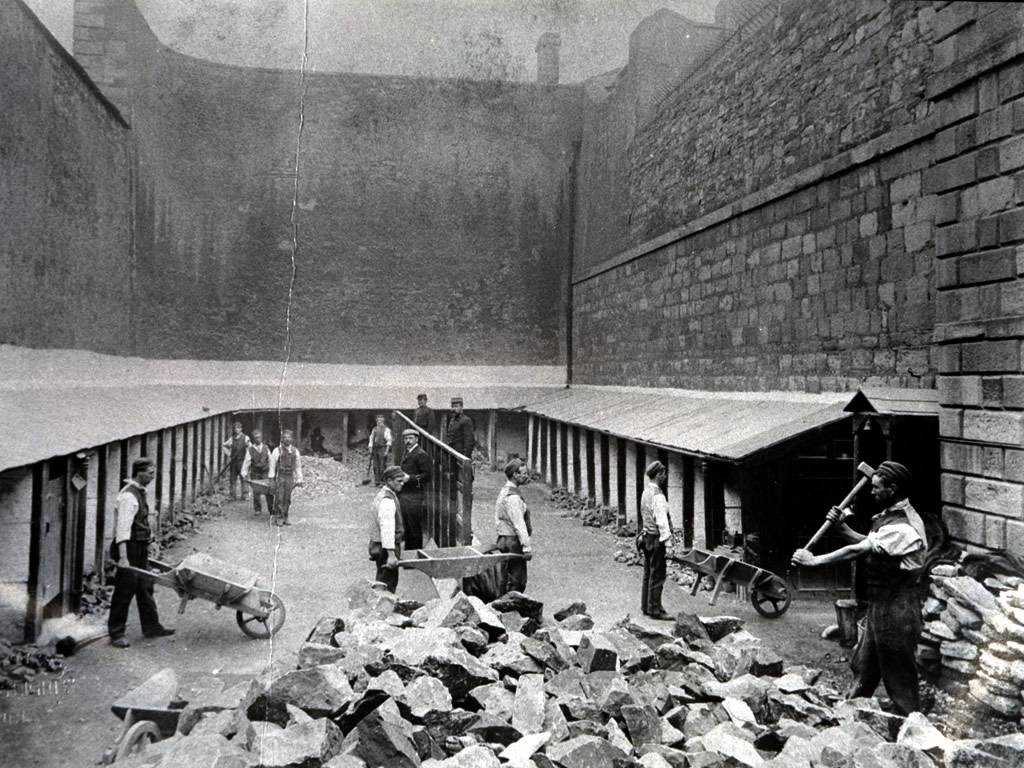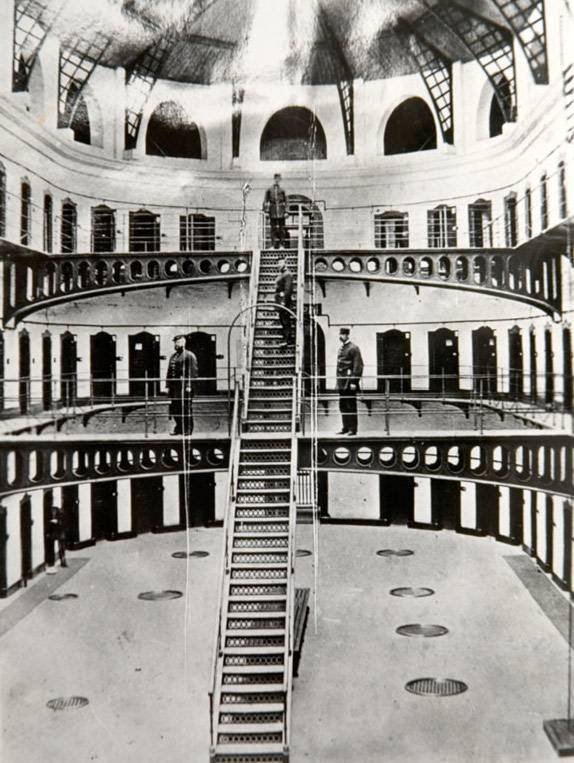The Building
Kilmainham Gaol was opened in 1796. Known as ‘the New Gaol’ at the time, it replaced an earlier prison which was located around the area of present-day Mount Brown. In line with most eighteenth-century gaols, this prison was a disorderly place. Men, women, and children were held together, gaolers were cruel, and conditions were unhealthy. The prison reform movement, led by John Howard (1727-1790), protested this atmosphere, and encouraged a move to single cells, and facilities for hygiene and health.
[This gaol is] extremely insecure, and in an unwholesome bad situation with narrow cells sunk underground, with no hospital. Through the windows of the prison the inmates conversed freely with acquaintances in the street from whom they procured instruments to assist escape. Spirits and all sorts of liquors were constantly served to the prisoners who were in a continual state of intoxication.
Building began on the new gaol in 1786, and would cost the Grand Jury of the County of Dublin £22,000 by the time it was finished. The architect was John Trail (c. 1725-1801). The location chosen was Gallows Hill, near the site of the old gaol. The height of the land here meant that drainage would be better, and it was thought that fresher air would circulate through the gaol. In Ashford’s painting, seen here, the prison has just been built. The original two wings were still in situ, and the site was surrounded by pasture. Limestone and granite were chosen for the main building material.
The gaolers lived in the central front block, while the two wings contained cells for the prisoners. Toilet facilities were confined to chamber pots inside the cells. Both warmth and light came only from candles, which were sparsely distributed (gaslight would later be installed in the 1840s).
The interior buildings and yards are surrounded by a thick wall which measures between 30′ and 50′ depending on its location. The main entrance was the formidable doorway, above which five monstrous shapes writhe. These have variously been called dragons, demons, serpents, and a hydra. It is said that they represented the five worst crimes: murder, rape, theft, treason, and piracy. Just outside this entrance was where public hangings took place until the late nineteenth century, and remains of the fixtures for the gallows can still be seen. The railings which exist today around this space were originally erected in the 1880s.
In the late 1850s, the east wing was replaced completely. The architect who won the open competition was John McCurdy, freemason and official college architect of Trinity College Dublin. This new wing was envisaged as a different system as early as its competition advertisement in 1857. It opened four years later, and reflected the very different ideas of the Victorian age. Based on the Panopticon, it is possible to see all ninety-six cells from a central viewing area. The use of light was deliberate and philosophical. It was thought that the huge skylight would spiritually inspire the inmates, while the out-of-reach cell windows would encourage them to turn heavenward. Under the ground of this new wing were four cellar-level isolation cells intended for dark and solitary confinement.



